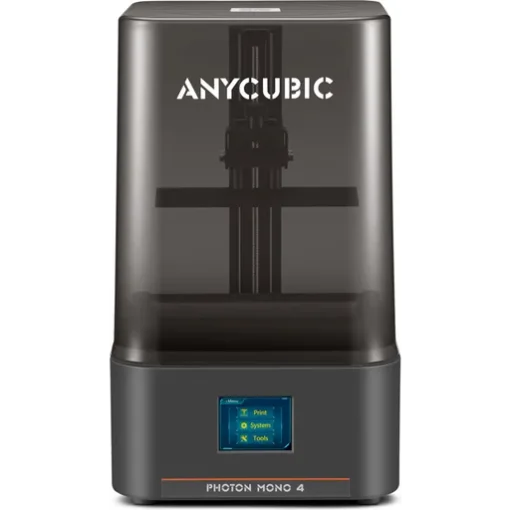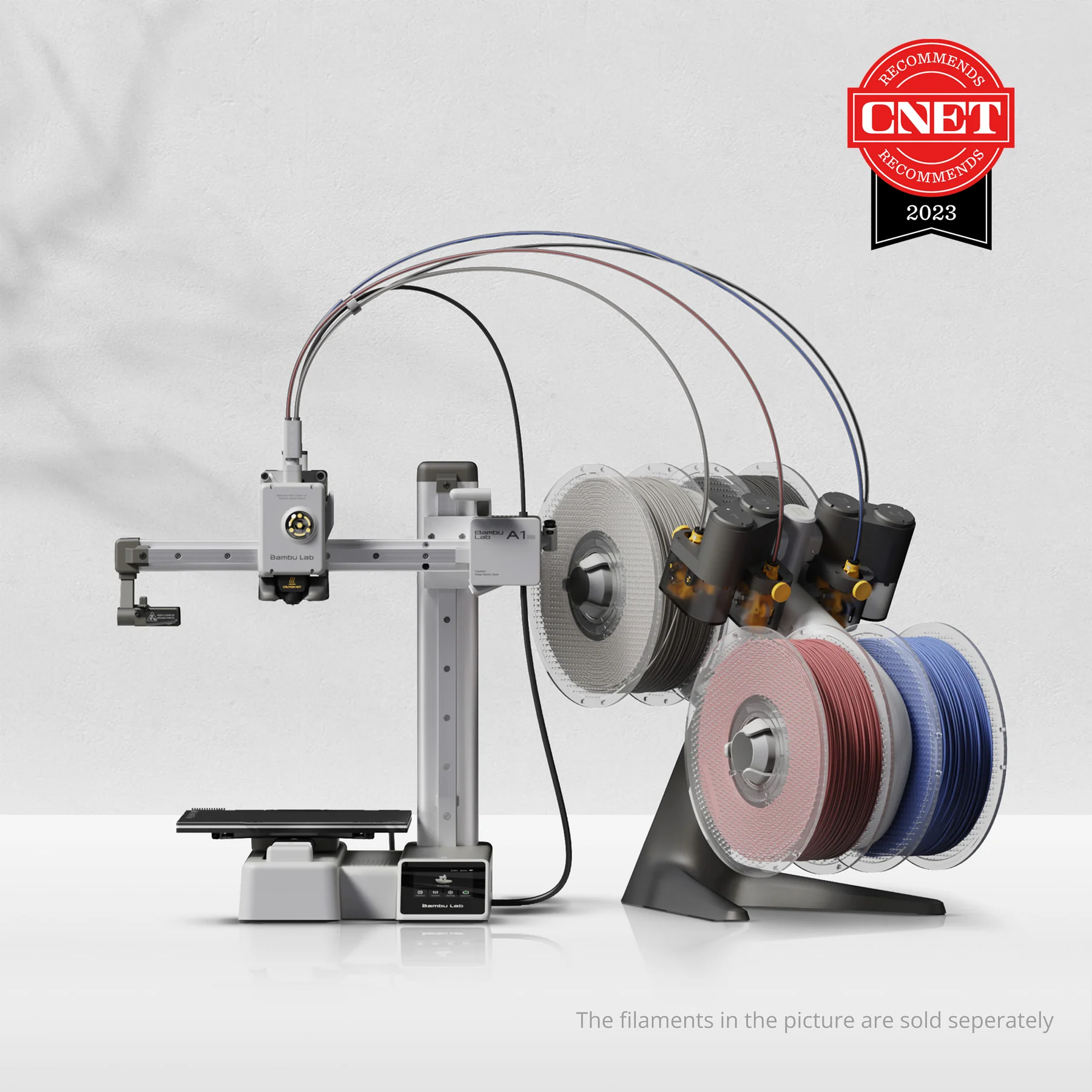Compare Photo Mono 4 vs A1 Mini
Comparison between the best 3D printers
Choose the best 3D printer at the best price. The cheapest 3D printers are here.
Buy a 3D printer here with 3D Fila.
 |
 |
|
| Model | Photo Mono 4[BUY Photo Mono 4] |
A1 Mini |
| Printing Material | Resin | Filament |
| Buy Resin for Anycubic Photo Mono 4 | Buy Filament forBambu Lab A1 Mini | |
| Estimated price | $200,00 | $549,00 |
| Manufacturer | Anycubic | Bambu Lab |
| Release Year | 2024 | 2023 |
| Print Volume [mm] | 153x87x165 | 180x180x180 |
| Printer Size [mm] | 300x300x480 | 315x347x365 |
| Weight [kg] | 4 | 5,5 |
| Power Loss Recovery | NO | YES |
| Maximum Resolution [mm] | 0,01 | 0,1 |
| Processor | 32-bit Silenciosa | |
| Display | Touchscreen 2.8'' | Touchscreen 2,4'' |
| Power Supply | 150 W | |
| Connectivity | USB | Wifi, Bambu bus, Cartão SD |
| Operating systems | Windows, Mac | Windows, Linux, Macbook |
| Date of registration in the system | 2024-12-13 | 2024-04-10 |
| Release date | 2024 | 2023 |
| Extra features | The Anycubic Photon Mono 4 features 10K resolution (9024x5120), ensuring precise details with pixels of 17x17um. Its laser-engraved platform 2.0 offers excellent adhesion and easy model removal. Equipped with LighTurbo matrix lighting, it provides uniform illumination, reducing layer lines and rasterization. It has a print volume of 153.4x87x165 mm, 4-point manual leveling, and a print resumption function after power outages, optimizing time and materials. | The Bambu Lab A1 Mini stands out not only for its impressive speed and automatic calibration, but also for its multi-color printing capability thanks to AMS Lite. This innovative system makes multi-color printing easy, making it accessible to everyone. AMS Lite, specific to the A1 Mini, supports up to four different materials simultaneously, providing creative freedom without complications. With comprehensive sensors for energy monitoring and recovery, a camera for timelapses and Wi-Fi control, the A1 Mini and AMS Lite together offer an intuitive and advanced 3D printing experience, ideal for materials such as PLA, PETG and TPU, and designed for simplicity and fast maintenance with quick-change nozzles. |
| Support for multiple colors and materials (AMS and CFS) | NO | YES |
Notes * |
||
| Cost-benefit | 8 / 10 | 7 / 10 |
| Hardware | 6.3 / 10 | 4.8 / 10 |
| Tela | . | . |
| Print volume | 3 / 10 | 3 / 10 |
| Performance | 9 / 10 | 4 / 10 |
| [BUY Photo Mono 4] |
Conclusion |
| In comparing the Anycubic Photo Mono 4 and the Bambu Lab A1 Mini, several factors emerge that highlight the strengths and weaknesses of each 3D printer. The Anycubic Photo Mono 4, priced more affordably, excels in print resolution, achieving an impressive 10K detail that is ideal for intricate models. Its compact print volume and lightweight design make it a suitable option for hobbyists who prioritize high-quality, detailed prints over volume. Additionally, features like power loss recovery and a user-friendly touchscreen interface contribute to a smooth printing experience. The cost-benefit ratio is favorable, reflecting strong performance for its value despite lower overall hardware capabilities. On the other hand, the Bambu Lab A1 Mini is positioned as a more versatile option, offering a larger print volume and advanced features geared toward users looking for speed and multi-material capabilities. The integration of automatic calibration and multi-color printing support through AMS Lite sets it apart, especially for users interested in diverse and creative projects. Its connectivity options, such as Wi-Fi and a built-in camera for timelapse, enhance the user experience, making it a more advanced model overall, albeit at a higher price point. Ultimately, the decision between the two will depend on the user's specific needs. If high-resolution detail and cost-effectiveness are the priority, the Anycubic Photo Mono 4 stands out as an excellent choice. Conversely, if a user values versatility, speed, and advanced features for varied materials, the Bambu Lab A1 Mini provides a compelling option worth the investment. |

